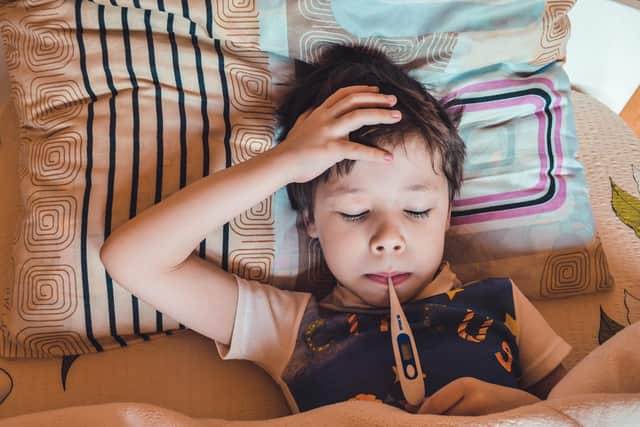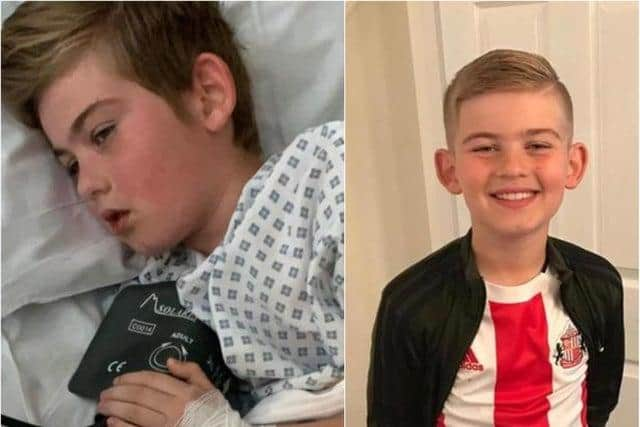What is PIMS-TS? The symptoms of coronavirus-related illness which left Sunderland boy seriously ill
and live on Freeview channel 276
The Royal College of Paediatrics and Child Health (RCPCH) has said a "small number” of patients with the rare Paediatric Multisystem Inflammatory Syndrome – known as PIMS or PIMS-TS – linked to COVID-19.
Advertisement
Hide AdAdvertisement
Hide AdIt says it is very rare and most children with the condition will not be seriously affected, but says in a few cases it, can be serious and even life-threatening, leaving them with symptoms similar to other life-threatening conditions such as sepsis or meningitis.


Cases were first seen in around April, when around 20 cases were seen around the UK’s intensive care units.
Doctors have expressed concern in severe cases of PIMS, the inflammation can spread to blood vessels (vasculitis), particularly those around the heart. If untreated, the inflammation can cause tissue damage, organ failure or even death,
Some of the symptoms of PIMS can overlap with other conditions, such as Kawasaki disease and Toxic Shock Syndrome.
Advertisement
Hide AdAdvertisement
Hide AdSome have referred to the condition as “Kawasaki-like disease” and just like PIMS, complications from Kawasaki can cause damage to the heart.


The RCPCH says Kawasaki tends to affect children under five whereas PIMS seems to affect older children and teenagers.
So what should we look out for?
A very wide range of symptoms have been recorded and it says children with PIMS can be affected very differently.
Some may have a rash and some, but not all, may have abdominal symptoms such as stomach ache, diarrhoea or vomiting.
Advertisement
Hide AdAdvertisement
Hide AdIt says all the children diagnosed with PIMS had a high temperature for more than three days, although this can be a symptom in many other illnesses and on its own is not a sign of PIMS.
If a child has a temperature of 38C or above, cold hands and feet and is sleepy, call your GP or 111.
If symptoms persist and it has not been possible to speak to either a doctor or the NHS over the phone, take your child to the nearest A&E.
It says “If you’re worried, trust your instincts and seek help.”
How is it connected to COVID-19?
Advertisement
Hide AdAdvertisement
Hide AdThe college has said PIMS appears to be linked to COVID-19 because most of the children either had the virus or tested positive for antibodies indicating they had been infected, even if they had not seemed ill at the time
However, it says a very small number of the children with PIMS symptoms didn’t test positive for either.
How is it treated?
In instances where doctors aren’t entirely sure whether a child or teenager has PIMS, they know how to treat the symptoms associated with it.
Doctors use the same type of treatments to ‘reset’ the immune system for both PIMS and Kawasaki disease.
Advertisement
Hide AdAdvertisement
Hide AdResearchers hope to find out more about how to diagnose patients as quickly and which treatments are the most suitable for each patient.
If it is similar to Kawasaki Disease, what are its symptoms?
Its symptoms are a high temperature that lasts for five days or more, with a rash, swollen glands in the neck, dry, cracked lips, red fingers or toes and red eyes also among the signs of the illness.
How rare is PIMS?
Advertisement
Hide AdAdvertisement
Hide AdThe RCPCH says it’s hard to know how many cases there have been because medics are still reporting back information, but it believes around 75 to 100 children may have been seriously affected and admitted to ICUs.
It says “almost all these children have since recovered” and says doctors think two children may have died, but can’t be certain there were not other reasons for the tragedies.
It says: “These deaths are very sad indeed but doctors believe deaths in children related to PIMS are very, very rare.
“Many more children die of other infections such as flu or even chicken pox every year.”
Advertisement
Hide AdAdvertisement
Hide AdA survey has been sent to 2,500 paediatricians to gain a more complete picture, asking for details of every potential case seen since the beginning of March and it expectst expects to see more cases being reported, possibly around 200 in England, but it adds many will not have been seriously ill and almost all diagnosed with PIMS are well again.
It also says the research cases which later turn out to be a different illness, such as Kawasaki disease and that some doctors believe a much large number of children may have had the condition but were very mildly affected and recovered without seeing a doctor.
It adds: “Doctors have reported seeing a big reduction in cases in recent weeks but this could rise if cases of COVID-19 go up again.”
Are black or Asian youngsters more likely to be affected?
The RCPCH sais when the first few cases were identified in the UK there seemed to be a larger number of children from an Afro-Caribbean or Asian background.
Advertisement
Hide AdAdvertisement
Hide AdDoctors do not yet know the reason for this and it may turn out that these children are not at a higher risk than other children, and says in some other countries where the syndrome has been written about the children were white.
“But it is important for families with these backgrounds to be aware of the signs and symptoms of the condition, however rare,” it says.